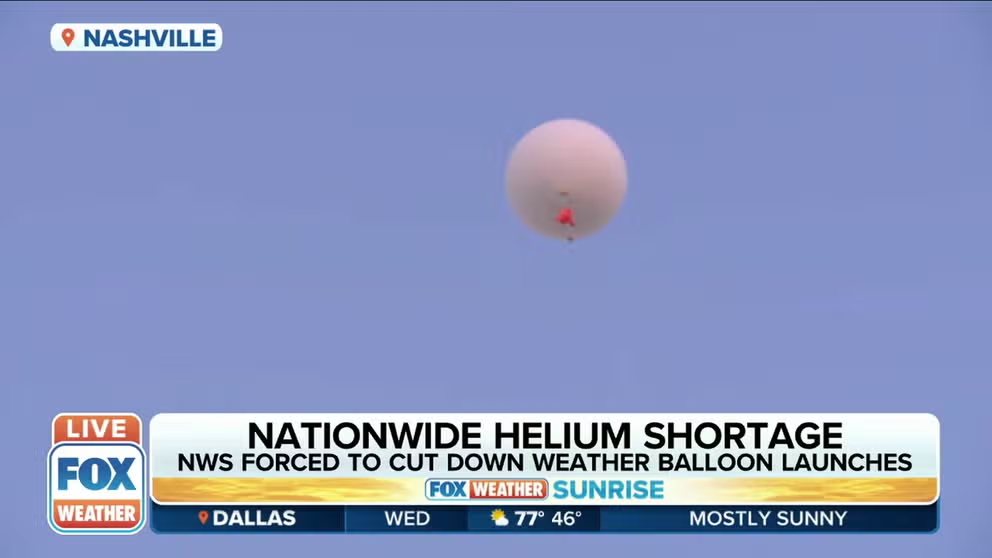Hydrogen is a cheaper option to fill weather balloons amid helium shortage
An instrument called a radiosonde is attached to the weather balloon to feed back data in real-time
NWS forced to cut down on weather balloon launches due to helium shortage
Many offices switched from helium to hydrogen balloons instead of leaving holes in data – but not all offices.
NASHVILLE, Tenn. - Balloons are an essential tool used to help forecast the weather all over the country, but a helium shortage is forcing some National Weather Service offices to look at other options, like filling them with hydrogen.
FOX Weather first began reporting on the worldwide helium shortage last week and explained how the lack of gas is forcing some NWS offices, like the one in Tallahassee, Florida, to reduce balloon launches from twice a day to one per day.
HELIUM SHORTAGE FORCES NWS DATA COLLECTION TO FLOAT NEW SOLUTIONS
The NWS office in Nashville uses hydrogen in their weather balloons and gave FOX Weather correspondent Nicole Valdes a behind-the-scenes look at how the process works and how the balloons can help keep us safe.
To get you the correct forecast, you need the right data. And to get the correct data, meteorologists want to use every tool in their toolbox.
Many use radar and satellites to find out what's happening in the sky, but weather balloons can do things other tools can't do - like fly directly into the atmosphere.
Krissy Hurley is the warning coordination meteorologist at the NWS office in Nashville. She and her team launch weather balloons twice a day.
She attaches an instrument called a radiosonde to a parachute that is then attached to the balloon.
"It tells us everything that we need to know," Hurley said. "The temperature, the dew point, the relative humidity, the barometric pressure, the wind speed and the wind direction."
WEATHER BALLOON GOES ON 117-MILE RIDE OVER LAKE MICHIGAN
The instrument is filled with sensors and a GPS that sends back conditions it reads from several miles above Earth in real-time.
On the ground, the balloon is filled with hydrogen and expands in size to about 4 feet by 4 feet. When released, it will climb as high as 20 miles above the Earth's surface. As it does, the balloon will expand in size and become as large as a 2-story house before it pops.
The balloons also need to be launched at the right time. In Nashville, they can only be released after 6 a.m. and 6 p.m.
"Once the radiosonde is launched, we instantly get data right into the office," Hurley said. "It can help us make decisions on whether we need to include certain counties in a tornado watch or severe thunderstorm watch."
ACCURATE WEATHER FORECASTS WOULD BE ALMOST IMPOSSIBLE WITHOUT WEATHER BALLOONS
She also said it helps the office decide if they need to bring in extra staffing to cover and forecast a severe weather event.
That's why the balloon launches happen at NWS offices across the country.
"Us meteorologists, we need to learn more about the atmosphere and learn more about those kinds of events and how we communicate those to better serve the public, so they take action and know what to do when severe weather strikes," Hurley said.
The radiosonde is also equipped with mailing instructions and prepaid postage, so anyone who finds the instrument after it falls back to Earth can toss it in a mailbox to be returned to the NWS office to be reused.
